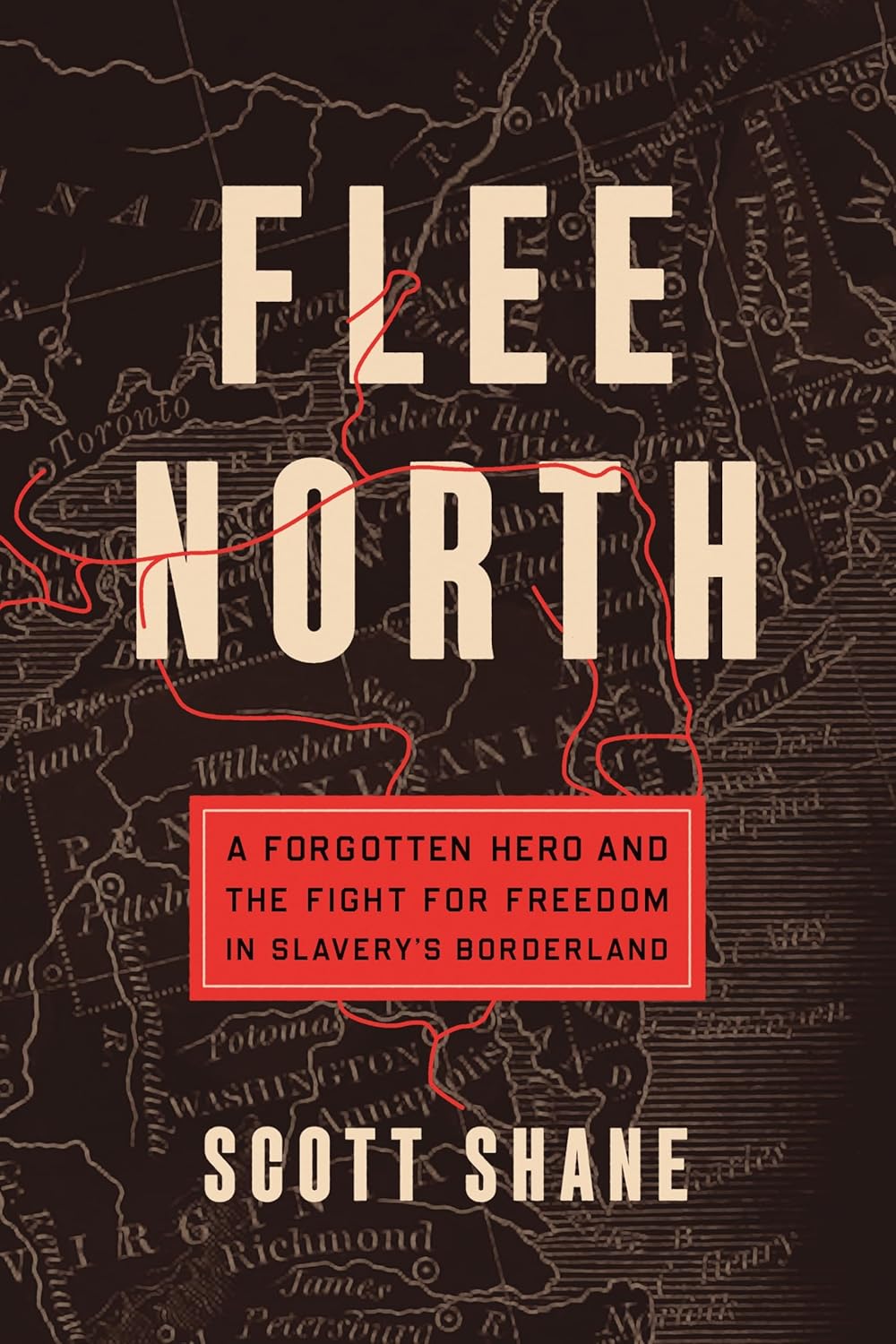Summary | Excerpt | Reviews | Beyond the book | Read-Alikes | Genres & Themes | Author Bio

A Forgotten Hero and the Fight for Freedom in Slavery's Borderland
by Scott ShaneScott Shane's outstanding work Flee North tells the little-known tale of an unlikely partnership between a man who'd been enslaved and an ardent abolitionist. Thomas Smallwood was born in slavery in Maryland in 1801 and managed to purchase his freedom at the age of thirty. He spent the next decade working as a shoemaker and repairer near the Washington (D.C.) Navy Yard before meeting Charles Torrey (1813-1846), a young white minister. Over the ensuing 18 months, the pair helped organize the escape of some four hundred enslaved men, women, and children.
Enslaved people have been running away from their enslavers since time immemorial, often alone but sometimes with the help of others sympathetic to their plight. What makes Smallwood and Torrey's efforts remarkable was the sheer scope of their plans. They weren't content to simply help one or two people flee captivity, but wanted to bring down the institution of slavery itself. According to the author, they felt that "if a sufficient number of enslaved people gained their freedom, stripping slaveholders of their wealth, the slave system might be undermined." And so, to make sure the escapes had the maximum effect, they planned to liberate 10 to 15 individuals at a time. The mass escapes did have quite an impact, with many enslavers waking up in the morning wondering with "wide-eyed bafflement that the people they enslaved, whom they often derided as incapable of planning anything or even looking after themselves, somehow managed to disappear overnight without a trace."
Beyond that, Smallwood was an educated man with a keen wit. After each escape he penned a missive calling out the perplexed enslavers by name and mocking them for their losses. He signed these letters Sam Weller, Jr., a reference to a character in The Pickwick Papers by his favorite author, Charles Dickens. Torrey printed them in the newspaper he owned and edited, The Tocsin of Liberty in Albany, NY, and Smallwood had copies sent to the slaveholders in question. It's in one of these letters to the editor that Smallwood/Weller coined a new phrase, referring to his system as "the under ground railroad" – a name that quickly caught on.
The author contrasts the efforts of Smallwood and Torrey with those of Hope Hull Slatter, a slave trader operating in Baltimore. Recaptured escapees were often sold to Slatter, who would in turn sell them to plantations in the South. As an infamous supporter of the institution of slavery, he was often the target of Smallwood's barbs, prompting him to collaborate with the local police and slave catchers to uncover the identity of the mysterious Sam Weller, Jr. This game of cat-and-mouse between the abolitionists and slavers makes up a large portion of the book's narrative.
Smallwood was forced to flee to Canada, ending his endeavors, while Torrey was able to continue for a short while longer. The latter was arrested and died of tuberculosis while incarcerated, making him a martyr to the cause of abolition. But although Smallwood was arguably the larger actor in the escapes and took many more risks (as a Black man, if caught he could have been re-enslaved), he was generally left out of the account of these escapes, with all credit going to Torrey. The author uses his background as an investigative journalist to wonderful effect here, digging into minutia such as tax records, unpublished correspondence, and microfiche copies of newspapers to piece together Smallwood's story. The amount of research Shane undertook to revive this little-known piece of history must have been monumental.
And beyond that, the book is simply a ripping-good yarn, at times reading like an action-adventure tale rather than a history or biography. It completely held my attention start to finish and added to my understanding of the era. I learned much about the period, and I found the author's ability to bring Smallwood's life into focus superb.
Flee North is one of my top books of the year to date. I highly recommend it to all audiences, particularly those interested in pre-Civil War United States history and those who enjoy biographies of little-known yet important historic figures. Its fast pace and interesting topic will make it a good selection for readers who don't generally choose nonfiction works, and book groups will find much to discuss within its pages.
![]() This review was originally published in The BookBrowse Review in October 2023, and has been updated for the
January 2025 edition.
Click here to go to this issue.
This review was originally published in The BookBrowse Review in October 2023, and has been updated for the
January 2025 edition.
Click here to go to this issue.

If you liked Flee North, try these:

by Jesmyn Ward
Published 2024
From Jesmyn Ward—the two-time National Book Award winner, youngest winner of the Library of Congress Prize for Fiction, and MacArthur Fellow—comes a haunting masterpiece, sure to be an instant classic, about an enslaved girl in the years before the Civil War.

A Passionate Mind in Relentless Pursuit
by Noliwe Rooks
Published 2024
An intimate and searching account of the life and legacy of one of America's towering educators, a woman who dared to center the progress of Black women and girls in the larger struggle for political and social liberation.
Your guide toexceptional books
BookBrowse seeks out and recommends the best in contemporary fiction and nonfiction—books that not only engage and entertain but also deepen our understanding of ourselves and the world around us.